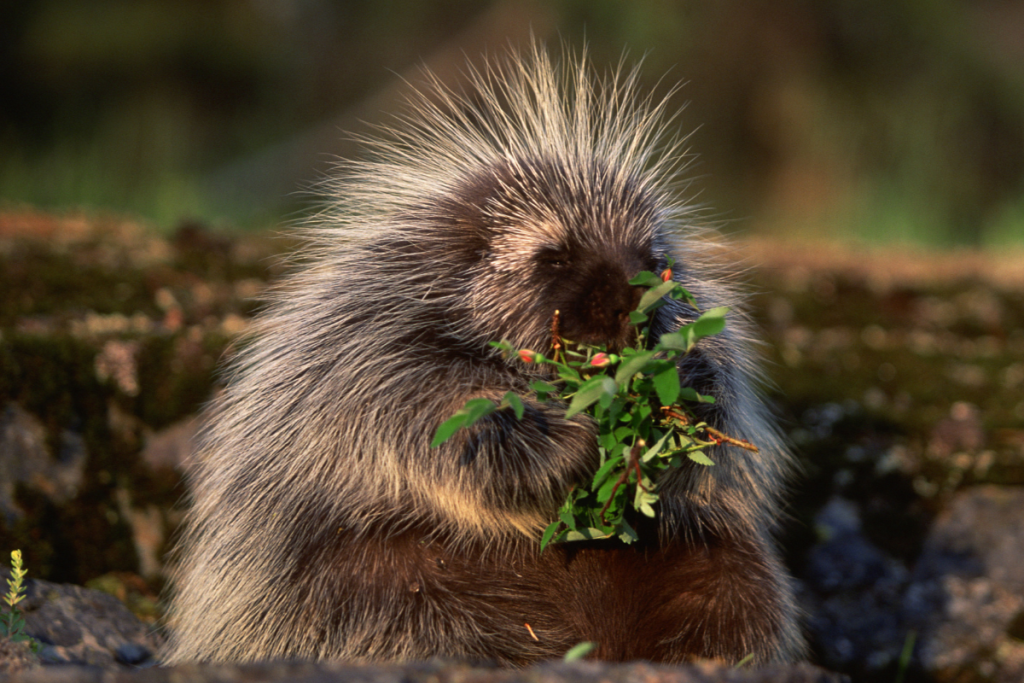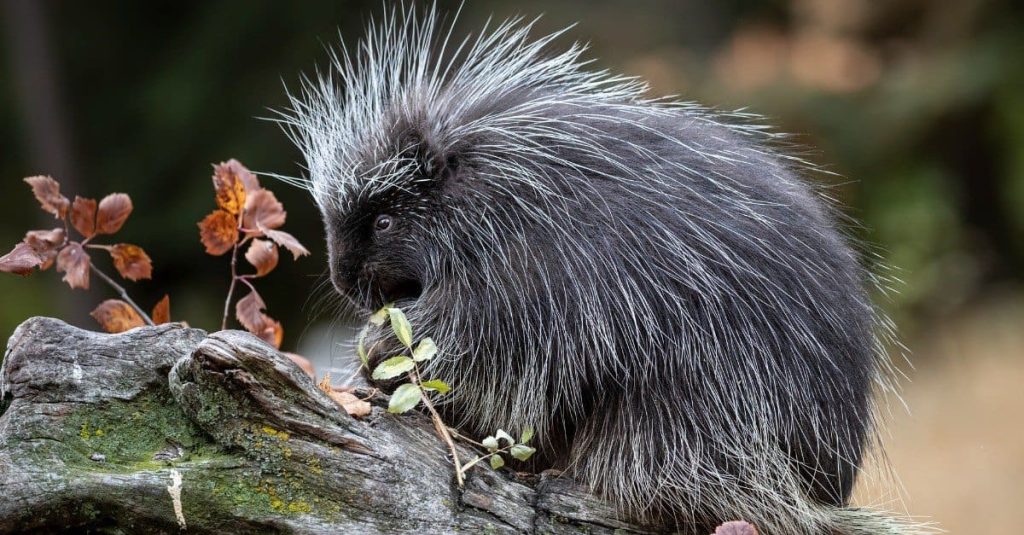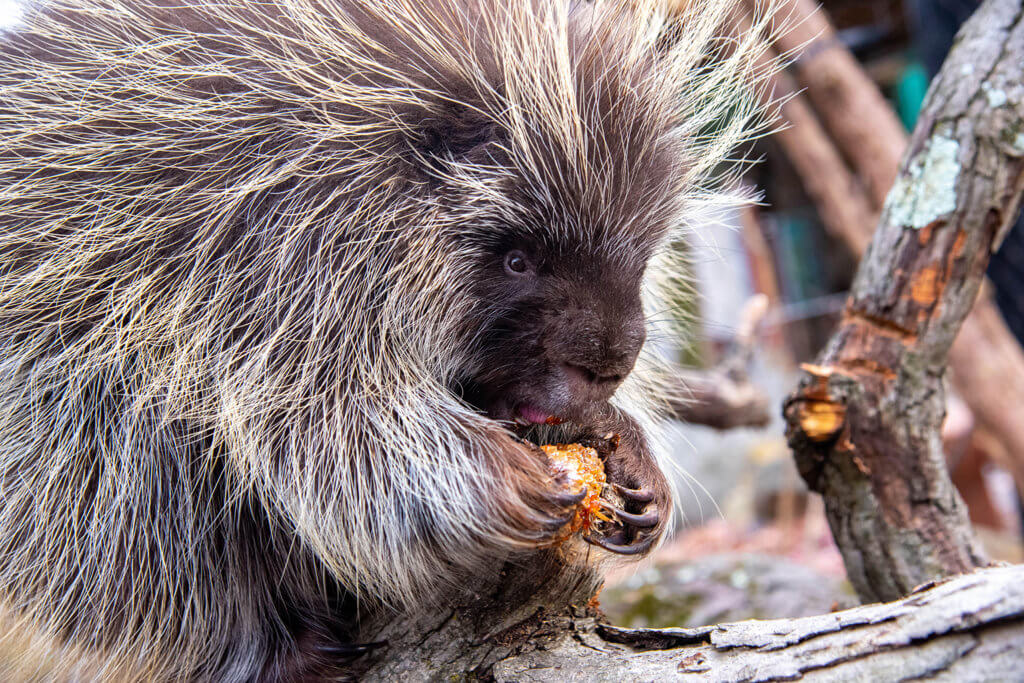Porcupines are herbivorous rodents that are found in various parts of the world, including the Americas, Europe, and Asia. They are well known for their distinctive coat of quills, which they use for defense against predators. However, what do porcupines eat? In this essay, we will explore the diet of porcupines, including their preferred foods, feeding habits, and adaptations for consuming their food.

Porcupines are primarily herbivores and consume a wide range of plant materials, including tree bark, leaves, twigs, and fruits. Their diet is highly variable and depends on factors such as the availability of food, the season, and their habitat. Tree bark is a particularly important part of their diet, especially during winter when other food sources may be scarce. Porcupines use their sharp incisors to chew through the tough outer layer of the bark, exposing the soft, inner layer, which they then consume.
In addition to tree bark, porcupines also consume a variety of leaves, including those from conifers, deciduous trees, and shrubs. They are able to digest tough, fibrous plant material thanks to their specialized digestive system. Porcupines have an enlarged cecum, which is a pouch-like organ in the digestive tract that contains bacteria and other microorganisms that help break down cellulose, a tough plant material that is difficult to digest.
Porcupines also consume fruits and nuts, such as acorns, apples, and berries. They are known to climb trees to reach these food sources, using their sharp claws and strong limbs to navigate branches. In fact, porcupines are excellent climbers and spend much of their time in trees, where they are able to find food and avoid predators.

Despite their herbivorous diet, porcupines are known to occasionally consume animal material, such as insects, bones, and carrion. However, this makes up a very small portion of their diet, and they are not considered to be true omnivores.
Porcupines are nocturnal, meaning they are active primarily at night. They are also solitary animals and do not typically live in groups or herds. However, they are known to share feeding areas with other porcupines, and will sometimes even feed together on the same tree or shrub.
One interesting adaptation of porcupines for consuming their food is their ability to rotate their front feet backwards. This allows them to grasp onto branches and tree trunks with their feet while using their sharp claws to climb and maneuver. Porcupines also have a prehensile tail, which means it is able to grasp and hold onto objects. This allows them to maintain balance while climbing and feeding.
Another adaptation of porcupines for consuming their food is their specialized teeth. Their incisors are sharp and strong, allowing them to chew through tough materials such as bark and wood. Their molars are flat and ridged, which helps to grind up fibrous plant material. Porcupines also have continuous growth of their teeth, which allows them to wear down their teeth as they chew through tough materials.

In conclusion, porcupines are herbivorous rodents that consume a variety of plant materials, including tree bark, leaves, twigs, and fruits. They are able to digest tough, fibrous plant material thanks to their specialized digestive system and enlarged cecum. Porcupines are also able to climb trees to reach their food sources, using their sharp claws and prehensile tail to maintain balance. Their specialized teeth and continuous growth of their teeth allow them to chew through tough materials such as bark and wood. Porcupines are fascinating animals with unique adaptations for consuming their food, and their diet plays an important role in their survival and well-being in the wild.


